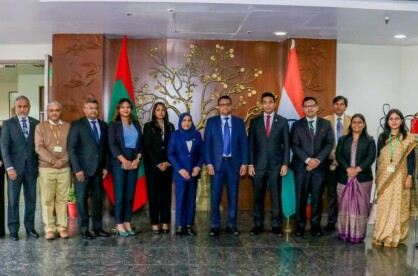Increasing government expenditure
Borrowing should be for expenditure that increases future economic growth.

Borrowing should be for expenditure that increases future economic growth.

The Government Budget includes details of expenditures to be incurred during the year on public goods, infrastructure projects, social protection services, and other spending on economic development projects. The annual budget also includes the amounts spent on principal repayments of debt, and also subscriptions made to international financial institutions.
Total government expenditure, and the total budget will not add up, as per the GFS format/standard. The total budget will include the total expenditure for the year, plus the amount spent on principal repayments of debt. However, these repayments will not be recorded in the total expenditures for the year. This is because those amounts will already be spent in a previous year, and recorded as expenditure during that respective year.
The total annual budget therefore will be the sum of total expenditure, and total of principal repayments of debt.
Total government expenditure includes recurrent expenditure and capital expenses. Operational expenditures like salaries, utility bills, grants, social security benefits are all part of recurrent expenditure, while spending on acquiring capital assets and spending on infrastructure projects are classified as capital expenditure. We would expect future economic benefits from those capital expenditures and investments made today.

Total expenditure in 2007 was at MVR8.3 billion, while it was at MVR28.8 billion in 2020. With the ratification of the new Constitution in 2008, and numerous changes in the state machinery has translated into increased expenditure every year. With new state institutions, and changes in the governance structure, the recurrent expenditure has been kept at over 20 percent of GDP in the last 13 years.
The main component of recurrent expenditure is spending on salaries, with over MVR8.2 billion spent in 2020. This means that the government needs about MVR700 million each month in order to pay the salaries of public sector employees. The second highest contribution comes from subsidies and grants, with over MVR4.5 billion spent in 2020.

As per the information provided by the Ministry of Finance (MOF), revised total expenditure for 2021 will be at MVR37.2 billion, while the total approved by the Parliament had been at MVR34.9 billion. This is due to an estimated 12.3 percent increase in recurrent expenditure.
The approved allocation for salaries in 2021 budget is MVR8.4 billion. However, the MOF now forecasts MVR8.6 billion in total spending on salaries for this year. This is a 5.3 percent increment to the level in 2020. According to the MOF, the increased expenditure is due to the front-line allowance, new recruitments, and increased over-time allowances. Spending on subsidies is also estimated to increase to MVR5.2 billion from the approved MVR3.9 billion.
Capital contributions to SOEs has also registered an increase compared to the approved amount for 2021. The total spending on economic activities is set to increase by 73 percent, mainly due to cashflow injections in to the Housing Development Corporation (HDC).
The MOF had earlier budgeted MVR1.5 billion for loan repayments, which is now set to increase to MVR4.6 billion as the government has raised USD500 as sukuk from the international financial markets, and decided to repay part of the USD250 bond maturing in 2022.

Total spending on salaries and allowances is set to increase further in 2022, with the implementation of minimum wage and pay-harmonisation initiatives. The total estimated for 2022 is at MVR9.6 billion, which is a 13 percent increment from the 2021 level. This also means that about 26 percent of the total government budget is spent on salaries. Over 3,200 additional recruitments are budgeted for 2022 – this includes newly created jobs as well as filling-up already existing vacancies. The highest contribution comes from the education sector, and the category identified as ‘Other’.
While this publication supports increased employment opportunities, and creation of jobs – especially during a period of economic downturn, it should also be noted that new job creation must be dealt with in a sustainable manner, to contribute to increased economic productivity. Government expenditure and investment, needs to contribute to creating jobs in the private sector, adding to the productive capacity of the country.
The 2022 budget has over MVR8 billion allocated for such investments targeted at economic development and increasing productive capacity. This includes the investment on upgrading the Velana International Airport, investments on additional domestic airports in the atolls, establishment of a high-speed ferry network, and the Greater Malé connectivity bridge.
The estimated deficit for 2021 is MVR13.7 billion (17 percent of GDP), while for 2022 it is estimated at a MVR9.7 billion (11 percent of GDP) budget deficit. The increasing budget expenditures, and the resulting deficit always result in adding to the already unsustainable debt stock of the country, as the deficit will be financed mainly through external and domestic debt. Incurring debt for financing the expenditures will make sense as long as such expenditures are for investments that generate future incomes. However, if such expenditures financed through debt is on recurrent expenditures, future generations will be paying for our present consumption.



